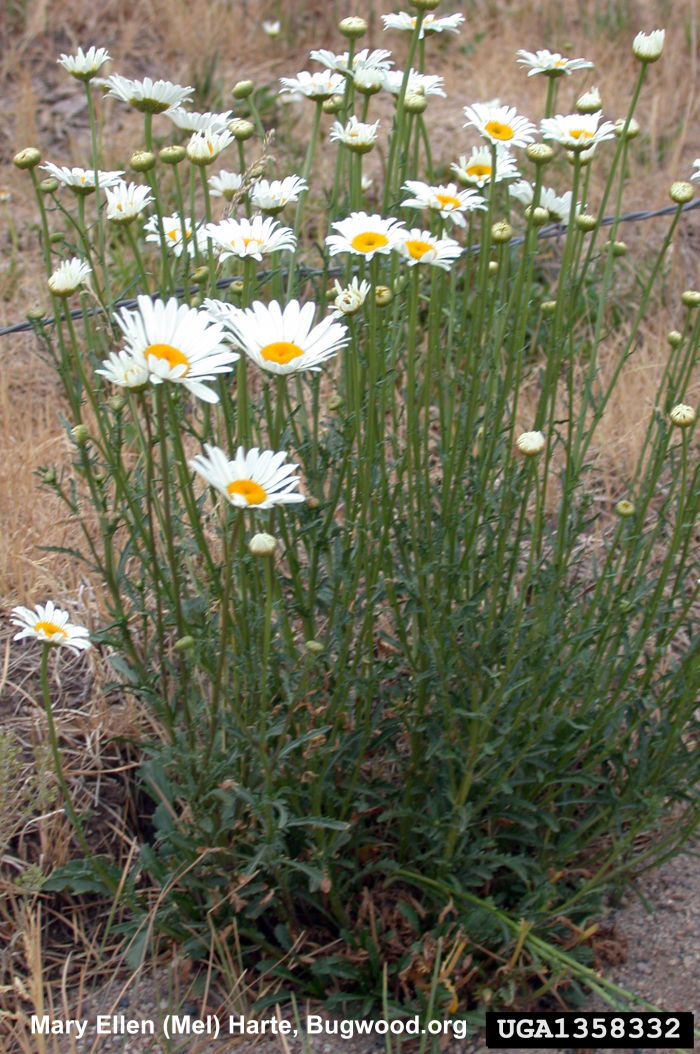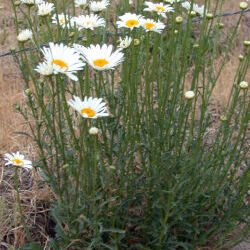
Priority: Strategic Control
General: Daisy in the Sunflower family that is often grown in flower gardens.
Height: Grows between 20 and 80cm tall.
Flowers: Daisy flower that is grows in singles at the end of the stem.
Leaves/Stems: Stems are smooth or with few hairs. Leaves are highly variable. The leaves at the bottom are 4-15cm long and can have a lance, narrow-egg or spoon shape. The upper leaves have no stalks and are toothed.
Root: Shallow fibrous roots.
White Daisy
Shasta Daisy is a garden ornamental and is often confused with invasive Oxeye Daisy.
Differences: Shasta Daisy has slightly larger flowers and all of its leaves are the same shape: lance with serrated edges.
Where did it come from? Europe. Introduced as a garden ornamental.
Where does it grow here? It occurs in mid to low elevations most often along disturbed areas like roadsides and fields. It often occurs on forestry roads and landings. It is a very common plant found in almost all areas of our region.
Reproduction: By seed and root. A single plant can produce up to 26,000 seeds. Seeds can remain viable in the soil for 2-3 years.
When does it grow, flower & seed? Sprouts April-May. Flowers June-July. Seeds August-September.
Spreads By: Gardeners will intentionally plant this species because it flowers at a different time than Shasta Daisy. Forestry activities like road building and logging is suspected to spread this flower as well.
Plant Type: Short-lived perennial.
- Invade pasture, open grasslands, roadsides and wetlands. It can take over areas and decrease the amount of native plants.
- Reduces forage for both wildlife & livestock.
- Not palatable to livestock due to an unpleasant taste.
- Can carry several crop diseases including yellow dwarf virus attacking potatoes.
- Review your property regularly for this species.
- Treatment Remove small patches before it flowers & sets seed. It is very hard to control this plant if an infestation becomes too large. The entire plant must be removed if doing manual control.
- Cover bare patches or disturbed soil by planting or seeding with non-invasives. Definitely cover disturbed areas to prevent new plants from growing.
- Check areas where you have removed invasives for any new plants that year and in future growing seasons.
- Dispose of invasive plants responsibly. Bag them for disposal at the local landfill. Composting and burning are not recommended.
- Contact LRISS for specific treatment recommendations.
Southern Interior Weed Management Committee. 2016. Invasive Plants of the Southern Interior BC. 86pgs.
Okanagan Invasive Species Online website.
